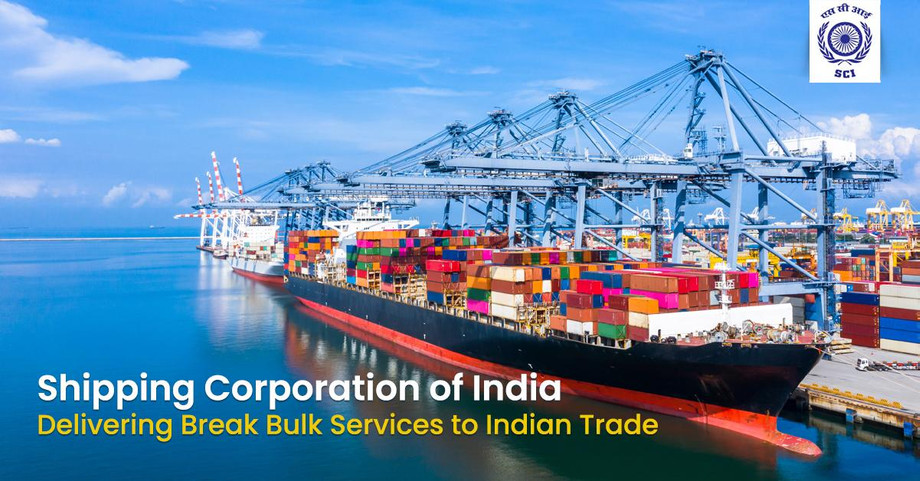Shipping Corporation of India (SCI) started as a marginal liner company evolving to be India’s largest shipping company. SCI has turned out to be the lifeline of the nation with its uninterrupted supply of crude oil driving the economy of India. Diversifying its services across a wide range of areas, SCI manages a large number of vessels on behalf of various government departments and organizations.
SCI — the only Indian shipping company offering overseas Liner Break-Bulk services to the Indian trade owns and operates around one-third of the Indian tonnage.
What are Break-Bulk Services?
Break Bulk refers to cargo or goods which are huge in size to be occupied within a container. The term relates to trades carrying cargoes in utilized form like bagged, strapped, palletized, bundled, drummed, and crated. Break Bulk is the initial method of shipping. Initially, the goods transported across the globe through cargo ships were loaded and offloaded one at a time. Before the rise of large container ships, break-bulk transportation was the most common method of ocean freight transportation.
Break Bulk transportation consists of carrying large cargo in small units like pallets, barrels, drums, boxes, or bags.
Let’s have a look at the difference between Bulk and Break-Bulk Services:
Bulk Services-
⦁ Dry cargoes like grain, iron ore, alumina, phosphate, and coal are carried in loose form.
⦁ The ships carrying these cargoes are termed as Bulk Carriers, Ore Carriers, or Bulkers.
⦁ The vessels are classified based on dead-weight i.e. weight that a ship can carry safely.
⦁ Freight rates charged on Metric Ton based on quantity and cargo loaded.
Break-Bulk Services-
⦁ Cargoes are transported in unitized form like bagged, bundled, palletized, strapped, drummed, and created.
⦁ The ships are known as Break Bulk, Multi-Purpose, or General Cargo vessels.
⦁ The vessels are classified into a variety of types based on sizes like Single Decker, Tween Decker, Box Holds.
⦁ Freight rates charged on the volume (CBM) or weight (MT) of the cargo whichever is higher.
Features of Break Bulk Services:
1. Oversized, Heavy Lift, and Out-of-Gauge Cargo:
Break Bulk Cargoes can transport oversized and overweight items that cannot be occupied in a container or a cargo. Break Bulk shipping is used to serve the oversized goods that are tedious to break down. Rather than breaking the item to fit it into the cargo, the method involves transporting it as a single piece. The break-bulk ship is equipped with a huge capacity of deck cranes and additional equipment crucial to load and unload these heavy goods. These high capacity decks facilitate loading the cargo by rolling on and off the vessel.
2. Separated Containers:
The break-bulk shipping ensures goods are not combined in a single container and items are shipped separately. Break Bulk eliminates the need to load the goods in separate containers. It loads heavy items with special equipment like cranes simplifying transporting the bulky items.
3. Minimized Deconsolidation and Reconsolidation:
Break-bulk shipping ensures there is no need to separate or deconstruct the cargo on the ship into pieces. Thus, there is a possibility that shippers might find it more affordable with oversized cargo leading to enhanced delivery time.
4. Affordable:
Breaking bulks into containers is expensive than transporting containerized goods as a whole. Cargo transported to and from ports by land is an efficient option for shippers that require inland services.
Wrap Up
Break-bulk transportation carries large cargoes into small units like barrels, drums, boxes pallets. Shipping Corporation of India delivers exuberant break-bulk services to national and international trade.

